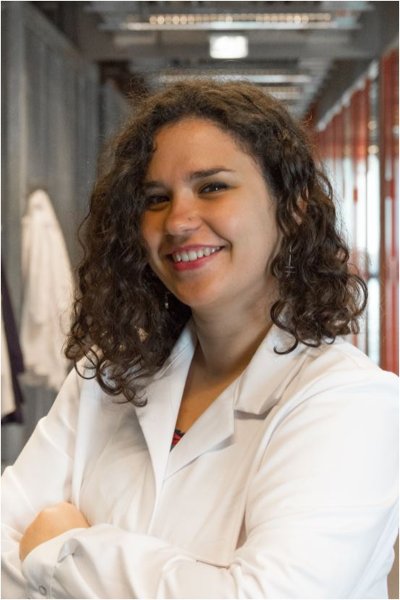Complex, Indeed: Polyelectrolyte-Based Membranes via Aqueous Phase Separation
Due to the COVID-19 crisis the PhD defence of Elif Nur Durmaz will take place (partly) online.
The PhD defence can be followed by a live stream.
Elif Nur Durmaz is a PhD student in the research group Membrane Science & Technology (MST). Her supervisor is prof.dr.ir. W.M. de Vos from the Faculty of Science and Technnology (S&T).
 This thesis focuses on membrane formation via polyelectrolyte complexation induced Aqueous Phase Separation (APS). Membranes are typically produced via phase separation methods in which toxic organic solvents are vital. The novelty of the APS approach is that only aqueous solutions are utilized to prepare membranes, which could eliminate the use of tons of organic solvents every year. Polyelectrolytes (PEs) are charged polymers and they have been used as membrane materials for decades, but mostly as membrane coatings or as dense films. Obtaining porous, free-standing membranes was not possible with conventional methods until APS methods came into the picture. Here, either the stimuli-responsiveness or the complex formation behavior of PEs can be used to achieve phase separation. There are two complexation-based APS approaches, namely pH-switch and salinity-switch. This thesis covers both of these approaches and a detailed discussion will take place on membrane formation and potential tuning parameters. In the first half of the thesis, the pH-switch approach is studied. Two different PE pairs were investigated. PE molecular weight, casting solution pH, coagulation bath pH, coagulation bath salinity, and PE mixing ratio are the tuning parameters that are affecting the membrane structure and performance. With the pH-switch approach, membranes that can operate from microfiltration to nanofiltration applications were obtained. In the second half, poly(sodium 4-styrenesulfonate) (PSS), and poly(diallyldimethylammonium chloride) (PDADMAC) were studied for the salinity-switch approach. Mostly, nanofiltration type membranes were obtained. Coagulation bath salinity and PE mixing ratio are the parameters that effectively changed membrane performance. In the outlook chapter, possibilities for polyelectrolyte complex membranes including organic solvent filtrations and hollow fiber spinning are discussed. The thesis is concluded by highlighting that the know-how of the membrane formation with APS is achieved and that a critical point remains in the careful selection of the used materials.
This thesis focuses on membrane formation via polyelectrolyte complexation induced Aqueous Phase Separation (APS). Membranes are typically produced via phase separation methods in which toxic organic solvents are vital. The novelty of the APS approach is that only aqueous solutions are utilized to prepare membranes, which could eliminate the use of tons of organic solvents every year. Polyelectrolytes (PEs) are charged polymers and they have been used as membrane materials for decades, but mostly as membrane coatings or as dense films. Obtaining porous, free-standing membranes was not possible with conventional methods until APS methods came into the picture. Here, either the stimuli-responsiveness or the complex formation behavior of PEs can be used to achieve phase separation. There are two complexation-based APS approaches, namely pH-switch and salinity-switch. This thesis covers both of these approaches and a detailed discussion will take place on membrane formation and potential tuning parameters. In the first half of the thesis, the pH-switch approach is studied. Two different PE pairs were investigated. PE molecular weight, casting solution pH, coagulation bath pH, coagulation bath salinity, and PE mixing ratio are the tuning parameters that are affecting the membrane structure and performance. With the pH-switch approach, membranes that can operate from microfiltration to nanofiltration applications were obtained. In the second half, poly(sodium 4-styrenesulfonate) (PSS), and poly(diallyldimethylammonium chloride) (PDADMAC) were studied for the salinity-switch approach. Mostly, nanofiltration type membranes were obtained. Coagulation bath salinity and PE mixing ratio are the parameters that effectively changed membrane performance. In the outlook chapter, possibilities for polyelectrolyte complex membranes including organic solvent filtrations and hollow fiber spinning are discussed. The thesis is concluded by highlighting that the know-how of the membrane formation with APS is achieved and that a critical point remains in the careful selection of the used materials.
